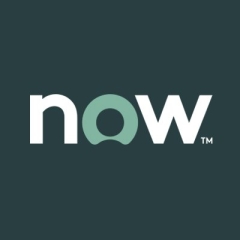What is our primary use case?
Predominantly, we used to have something like Clarity in the past to maintain our project portfolio management, our demand management, and agility management. However, we were not too happy with the analytics and the dashboards in the past with the Clarity product, their PPM product. That is when we migrated to ServiceNow. The main use case predominantly concerns demand management, forecasting, and portfolio management. The whole ITBM right now is also known as Strategic Portfolio Management. It's the whole portfolio across the practice as an entire thing managed through that. It's our whole go-to platform for managing merger planning. It is an enterprise agile planning tool.
What is most valuable?
The most important feature for us is project portfolio management. That helps us manage and track the entire life cycle of a project or a program at an enterprise scale and across business portfolios. That has been the key differentiator which we use from the product.
To look at the whole demand management perspective, now we are spread across the globe. We might have different demands coming in from the India region, from UK, APAC, US, et cetera. With this, we can figure out how to manage and forecast the whole business demand. That has been another major use case for us from a demand management perspective.
The resource manager is useful. If we know the demand, we know the business, how do we tie that up with resource ramp-up, ramp-down? It is not just about a few FTEs. This also includes expanding to an ODC, looking at what we can track, and seeing our resource availability and allocation according to skills, geographies, and levels. The whole resource management has been very helpful in visualizing resources.
There's lots of innovation within the product itself.
What needs improvement?
A major improvement we would like to see is definitely around agile management. They have improved over the last many years, in all fairness, yet there are many things they can do from an agile and scrum management perspective.
What is challenging for us is managing the finance. We still depend upon our classic Oracle NetSuite for many of these financial planning and organizing. While many features exist in ServiceNow, it is not far along with what we have in the Oracle world. Predominantly, we have to manually write the scripts and all the custom rules for much of the whole financial annual planning and monthly planning.
It's not out-of-the-box. There's a lot of customization, so I'll have to buy an expensive product like ServiceNow and then have a tech deck for it. I'll have to keep a big developer team on staff to build these things out.
One of the things they should definitely change is the number of out-of-the-box options. The native feature that comes with this financial planning is something that needs to change. For example, if I have to see some of these permutations and combinations, like how I see them on a spreadsheet, I should be able to import them. Everybody doesn't log into the portal. I need to figure out: how can I do it manually, upload it, and then have the XLSM take these macros and run? That is the one automation I would definitely like to see.
The finance teams, they're well-versed in using Excel. I cannot go and insist to them that they should start using my folders. I would love to see some compatibility where we could have something like a spreadsheet in Excel and then put it onto ServiceNow and have it reflected.
For how long have I used the solution?
I've been dealing with the solution for about five years now.
What do I think about the stability of the solution?
The product is stable. Once we have all the initial glitches and migration issues resolved, it's fairly stable. The product challenges we face are not from a whole platform perspective. It's only a customization perspective. Therefore, if I have customized more than a particular set of requirements, it takes a bit of time. If it's out of the box, I don't have to customize anything, and I'm ready to go. However, whilst we're customizing, the platform wouldn't be that stable.
ServiceNow, every six months, launches a new release, a major release. What happens is when the new release comes, for me to upgrade and transition to the new one takes a long time due to my heavy customization.
From an availability perspective, is stable. However, from a service availability, that upgrade cycle is usually much longer whenever we have to upgrade.
What do I think about the scalability of the solution?
The scalability is straightforward. You can scale up and down. That should not be a problem.
We do a true-up every month. We know how many licenses we are using. We are in total control of the ramp-up and ramp-down. We are good with that.
We have between 50 to 100 people on the solution.
I would love it if folks used it daily; however, they login in once a month for the monthly and fortnightly reports. The number of diligent users would be about 20 users. They use it for finance, procurement, and all these things.
Which solution did I use previously and why did I switch?
We also use Jir, which does an interesting job as well.
The business angle is well defined in ServiceNow products. Azure DevOps or other things are moving from a technical to a semi-technical area, where I cannot bring my business or financial teams to log in and get that focus. The biggest differentiator compared to other options is that it's predominantly from a persona approach. I can actually personify my platform for technical teams, semi-technical teams, and business teams. That has been the biggest value differentiator compared to other tools like Atlassian, maybe Clarity, or even Azure DevOps.
On the flip side, when I go to my technical teams, they would love to, obviously, log in only to an Azure DevOps or Jira option.
How was the initial setup?
The initial setup was fairly complex.
We thought we could have everything ready in six to eight weeks' time. However, it literally took us almost six months.
In all fairness, there are some things we also realized afterward. We are premium partners. We realized that, while we say out-of-the-box, it is not actually out-of-the-box. If you are staffing an organization from scratch, it is okay. However, we were already using Clarity and, obviously, spreadsheets. One of the issues which we face was a mindset from people who suddenly had to start using it when they already had methods.
Discounting that fact itself, many of the customizations and all those modules, configurations, parallel runs, and then going live and cutting over took us more than we thought.
The configuration of the product takes time. What happens is, while ServiceNow claims everything is out-of-the-box and everything can be easily achieved, many times, for some customizations, we had to raise a ticket with the actual ISVs, or the vendors and then add that. And we have an in-house ServiceNow team. We are not beginners.
We know ServiceNow pretty well. In spite of that, if you have to refer to ServiceNow, it means it's still not that user-friendly compared to others. They're in that space, they're evolving. However, it's more from the configuration perspective where you run into issues. I'd rate the initial setup at a or 2.5 to three out of five. It's not easy. There's a moderate amount of difficulty.
What was our ROI?
The ROI is quite high as I can have my team members all on one portal.
With this product, I have a unified integrated view across geography, across teams, and that helps. That itself allows them to collaborate together. Apart from that, from an ROI perspective, some of our planning and forecasting have been much more streamlined. If you look at ROI from that perspective, it's high.
I'd rate the ROI at a four out of five. It's quite good.
What's my experience with pricing, setup cost, and licensing?
Since we are a managed service provider, we buy it annually.
While we might charge back to the business and charge back to our end. We also have some business people, consumers, and customers. For them, we do it monthly. From our direct contracting perspective with ServiceNow, it's an annual fee.
The cost of the solution should not be more than $50,000 annually.
We use the high-end version; we don't use a standard version. We have many other integration hubs and other things, so it's a bundled product.
From a dollar-to-dollar comparison, they're expensive. They're actually more expensive than, probably, Clarity. They're actually more expensive than whatever you have from a portfolio management option from Atlassian. However, if I look at the whole ROI, it is reasonable. That said, of course, we would love it if the price was reduced.
I'd rate the solution four out of five in terms of value for money.
What other advice do I have?
In ServiceNow, since we are an MSP and a premium partner with ServiceNow, we pretty much cater almost to the entire suite, or at least the entire ITX. That's IT Service Management, IT Operations Management, IT Asset Management, IT Business Management, and then more or less the governance risk and compliance aspects.
I'd rate the solution seven out of ten.
Disclosure: My company has a business relationship with this vendor other than being a customer. Partner




















